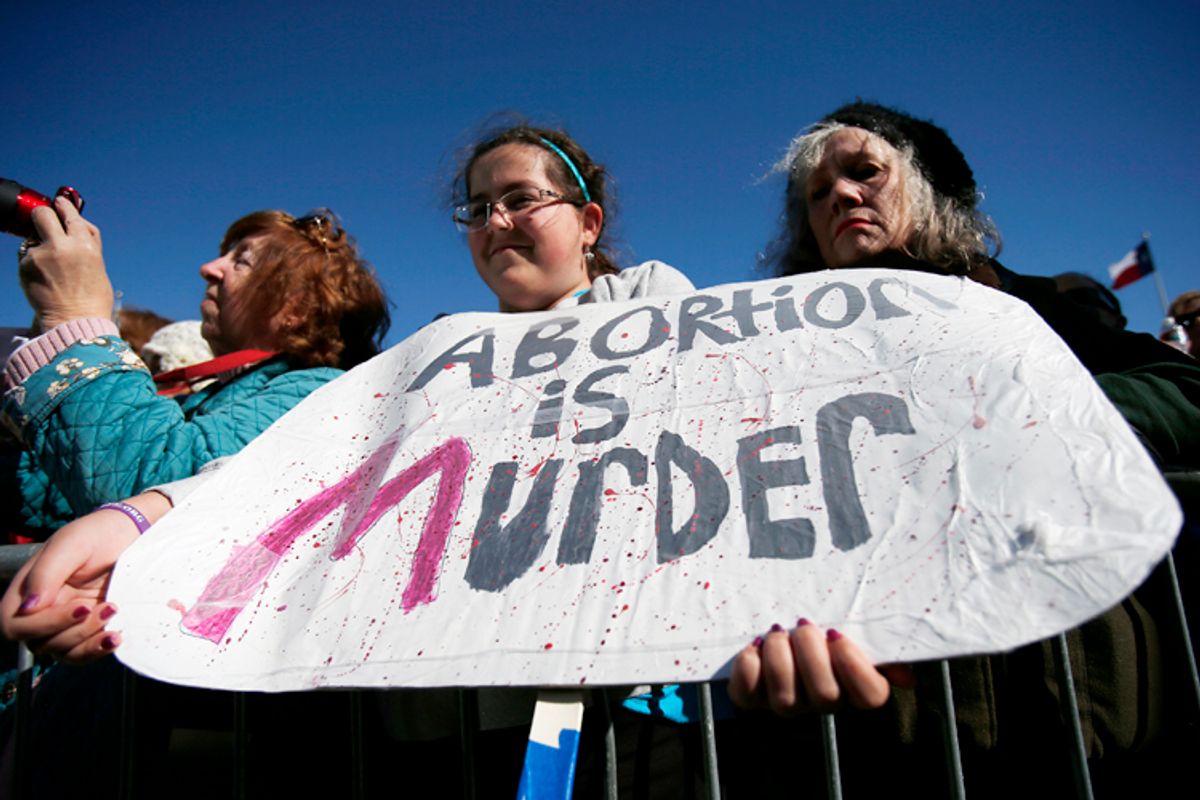The Supreme Court will hear arguments on Wednesday in a challenge to a 2007 Massachusetts law creating a 35-foot buffer zone around the entrances of reproductive health clinics. The law was created in response to a history of violent harassment outside clinics in the state, including a deadly shooting spree in 1994.
Supporters of these buffer zones argue that they are necessary to allow women seeking care to enter without harassment or intimidation; prior to the law, antiabortion protesters could gather at the entrances of clinics and physically impede a woman's ability to go inside, often shouting antiabortion propaganda in the process.
Massachusetts Attorney General Martha Coakley, the lead defendent in the suit, will argue the importance of the law before the high court. “This law is access balanced with speech balanced with public safety,” Coakley explained to the New York Times. “It has worked extremely well.”
Eleanor McCullen, the antiabortion protester who believes the law violates her First Amendment rights and brought the legal challenge, spends her days outside a clinic on Boston's Commonwealth Avenue harassing women who enter the clinic. The buffer zone, she says, prevents her from speaking to five or six women a day because she can't catch up with them before they enter it.
The Times spent some time with McCullen as she went about her daily routine, providing a glimpse at the buffer zone in action:
On Wednesday morning, Ms. McCullen said the law frustrated her attempts to talk to women entering the clinic. She said she had just moments to try to make contact before she had to pull up short. [...]
As she talked with a reporter, she scanned the people walking toward the clinic, on a busy stretch of Commonwealth Avenue near the Boston University campus. Most walked straight through the zone, oblivious to it.
But as three young women made a path for the door, a second protester, Mary O’Donnell, called out from the far side of the yellow line. Her tone was conversational, and her words were partly muffled by passing traffic.
“Please allow us to help you,” Ms. O’Donnell said. “It’s not too late to change your mind.”
The women kept walking.
Ms. O’Donnell, 81, said she found the line baffling. “This is wrong,” she said. “It’s bizarre.”
A lawyer for McCullen says that the buffer zone -- which is the approximate size of two parking spaces -- presents a barrier to his client's ability to persuade. “When you make people stand behind a line and make them shout ... that can diminish them in the eyes of the audience," he said.
But in reality, most women who seek out abortion services do so because they are confident in their medical choice. A recent study on abortion and forced ultrasound laws revealed that nearly 93 percent of women accessing abortion expressed confidence and certainty in their decision, and weren't persuaded to change their minds after being offered the option to view a sonogram.
While the circumstances of the study may be different than the harassment McCullen subjects women to, it also suggests that these women would also not be persuaded by her antiabortion sermonizing.
But what can present a barrier to access -- and what seems to be most at issue in the Supreme Court case -- is whether the physical intimidation of protesters who block doors and place themselves in the paths of women entering the clinic may deter women from getting care because of fear or an aversion to confrontation.
If you don't think that's a very real danger, take a look at what that kind of harassment looks like:



Shares